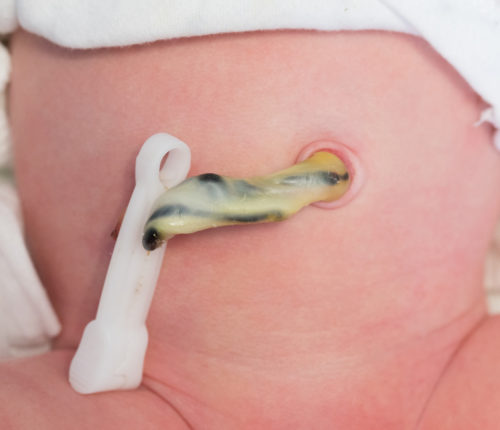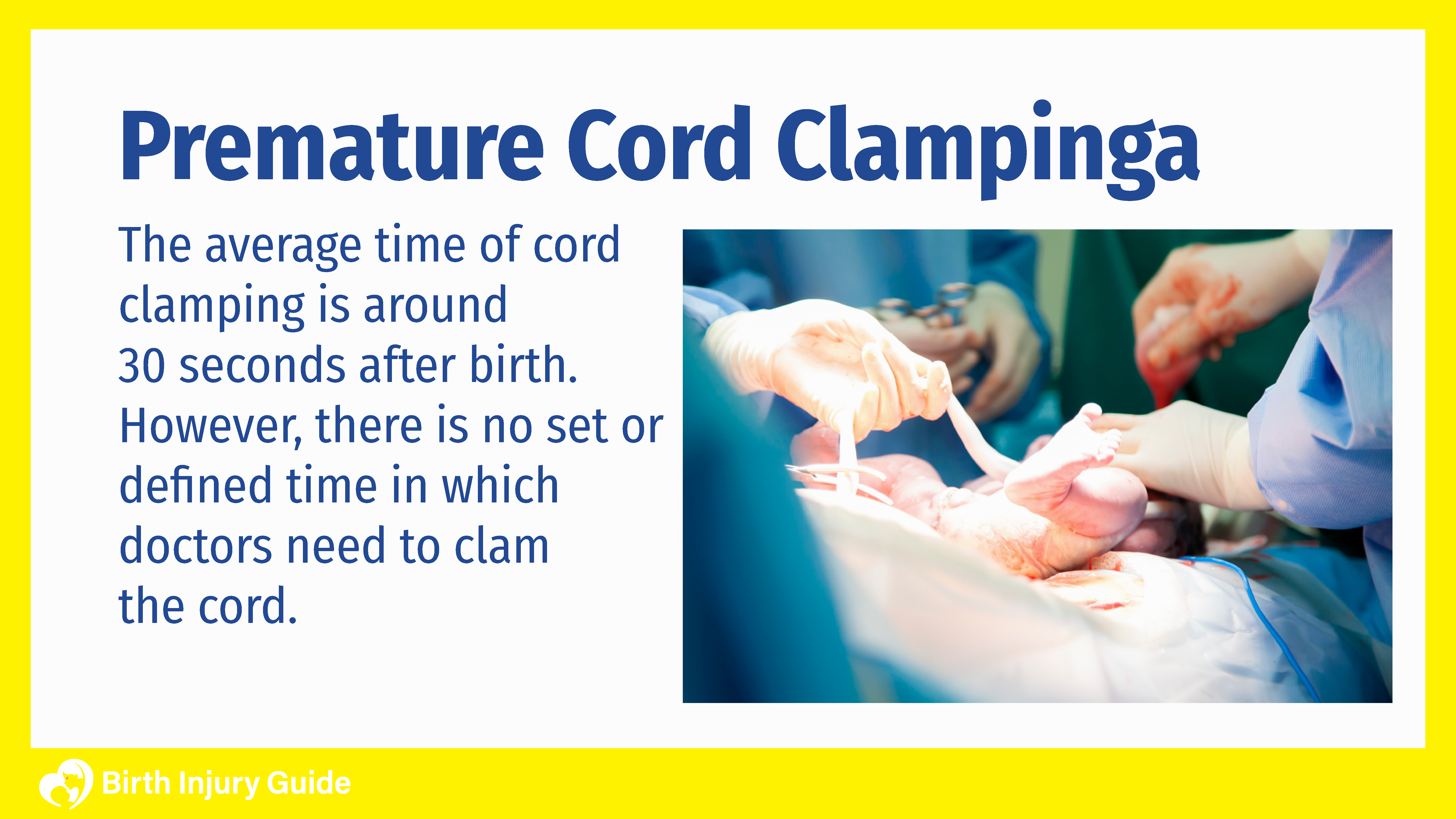
Premature Cord Clamping
Since the early 1960s, physicians have been cutting and clamping infants’ umbilical cords within seconds after birth. However, an array of evidence suggests that this practice is detrimental to babies, depriving them of much-needed benefits from the placenta much too early. Furthermore, it places infants at risk for a series of birth injuries and health issues.
Why Cut the Cord so Early?
The timing of cord clamping will vary according to each hospital, clinic or birthing center. However, the majority of physicians assume that clamping an umbilical cord early reduces the risks of postpartum hemorrhaging.

According to the National Institutes of Health (NIH), studies indicate no significant changes or effects of postpartum hemorrhaging when delayed clamping was performed.
Another reason the practice of early cord clamping is so prominent is because it was once thought that healthy newborns had more than 90 percent of the blood volume needed after taking their first breath. This was assumed because of several medical studies that took place prior to the 1960s. These studies indicated that infants had more than enough blood volume only seconds after birth. However, after more in-depth research and studies on the subject, results indicate that this isn’t true for every infant. Furthermore, most babies lose out on vital supplies that the placenta still provides shortly after birth.
Risks of Premature Cord Clamping
One of the biggest risks of premature cord clamping is blood loss. A common misconception, according to pediatrician and author Mark Sloan M.D., is that full-term, healthy infants do not benefit additionally from the extra blood from the placenta.
However, regardless of whether the baby is born full-term or preterm, Dr. Sloan states that one-third of an infant’s total blood volume is in the placenta. In a recently-published study on the timing of umbilical cord cutting, presented by the Cochrane Summaries, evidence suggests that premature cord clamping can lead up to an astounding 50 percent loss of blood cells for infants in fetal distress, and up to 30 percent in normal deliveries with no other problems. Red blood count loss can increase to up to 50 percent as well
When the blood supply from the placenta is cut off, the infant is also at risk for iron deficiency, as mothers carry vital iron amounts in their blood. Iron deficiency is a valid concern in the United States, with at least 10 percent of the nation’s toddlers, ages 1-3, suffering from it. For those who are at a disadvantage socially and economically, these numbers increase to around 20 percent.
Oxygen loss is another concern with premature cord clamping. In combination with blood loss, a myriad of health issues and risks arise for infants with oxygen deprivation, including:
- Brain damage
- Cerebral palsy
- Autism
- Poor cognitive skills
- Poor social and emotional skills
- Respiratory distress
- Brain hemorrhaging
Is an Infant at Risk for Jaundice if Cord Clamping is Delayed?
Another common reason that umbilical cords are clamped early is the heightened risk of a baby developing jaundice if cord clamping is delayed. Although studies suggest there is a slight risk of developing jaundice if the clamping is delayed, the American College of Obstetricians and Gynecologists (ACOG) suggests that the benefits of delaying cord clamping outweigh the risks of premature cord clamping. Infants who show signs of jaundice, however, must be monitored closely and treated immediately. A study published in the 2008 issue of the Cochrane Database of Systematic Reviews states that infants only have a five percent risk of jaundice when the cord clamping is delayed, yet a three percent risk still exists for infants who undergo early cord clamping.
Benefits of Delayed Cord Clamping
Along with better iron and blood levels, there are a variety of benefits to delayed cord clamping, including:
- A decrease in the chances of intraventricular hemorrhaging: The chances of intraventricular hemorrhaging among preterm infants reduces by 59 percent, according to studies.
- Decreased infant sepsis: Infant sepsis can be reduced by up to 29 percent when cord clamping is delayed.
- Decreased chance of anemia: The risks of anemia are reduced by over half when cord clamping is delayed.
- Higher birth weight: Delayed cord clamping has been linked to a newborn weighing slightly more at birth.
How Long Should Cord Clamping Be Delayed?
As mentioned earlier, there are no set rules yet as to when an infant’s cord should be clamped. However, several experts and agencies, including the World Health Organization (WHO), suggest that the ideal time would be anywhere between one to three minutes.
If you’re pregnant, it’s important to talk with your physician beforehand if you want your baby’s cord clamping delayed. The risks of birth injuries and other health issues associated with premature cord clamping provide enough reasons alone for parents to discuss the issue with their doctors.
Sources:
- https://www.acog.org/Resources_And_Publications/Committee_Opinions/Committee_on_Obstetric_Practice/Timing_of_Umbilical_Cord_Clamping_After_Birth
- http://www.ncbi.nlm.nih.gov/pubmed/22913332
- http://www.mchip.net/sites/default/files/mchipfiles/MCHIP%20DCC%20Briefer_0.pdf
- http://www.medicalnewstoday.com/articles/263181.php



